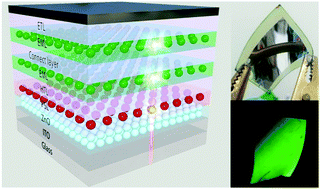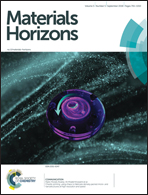Near infrared to visible light organic up-conversion devices with photon-to-photon conversion efficiency approaching 30%†
Abstract
Near infrared to visible light organic up-conversion devices have drawn more and more attention for their advantages of low cost, large area, flexible and easy processing. However, the photon-to-photon conversion efficiency is still a challenge for practical application. Here, high-performance near infrared to visible light organic up-conversion devices were developed by integrating a near-infrared polymer photodetector and a green tandem organic light emitting diode. The integrated devices showed a peak photon-to-photon conversion efficiency up to 29.6%, which is among the highest reported values. Comprehensive studies on the both optical and electrical interaction between the light absorption unit and the light emission unit in the integrated devices revealed that the more than doubled electron-to-photon conversion quantum efficiency was obtained through the photo-multiplication effect of tandem OLEDs. Furthermore, large area and flexible up-conversion devices with the same structure were also fabricated, showing a better imaging performance than the commercial IR detection card.



 Please wait while we load your content...
Please wait while we load your content...